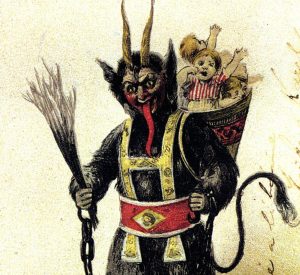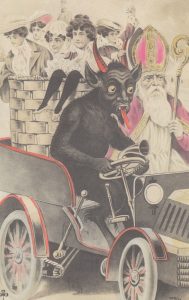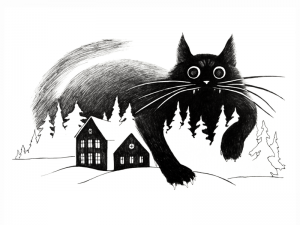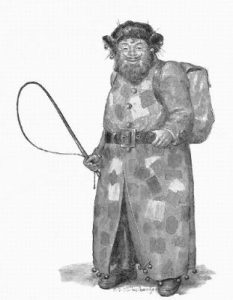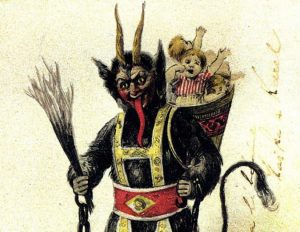Although Santa Claus is certainly the world’s best-known Christmastime gift-giver — thanks in no small part to the global influence of American culture and the advertising budget of The Coca-Cola Company — he is by no means the only such figure. European tradition and folklore is rife with precursors, side-kicks, companions, and parallels. (See, for example, Krampus, Knecht Ruprecht, and Besnickel.) Many of these characters resemble St. Nick in form, function, or disposition: (typically bearded) magic men who dole out presents to well-behaved children and, at times, punishments to the naughty ones.

Icelandic folklore features its own unique cast of Christmas characters: the terrifying ogre Grýla and her husband Leppalúði, who feed on children and fish; the gigantic Yule Cat, a feline taller than the tallest houses that devours anyone caught without a new article of clothing at Christmas; and the Yule Lads, thirteen mischievous elves who deliver tricks and treats at holiday time. Sometimes called the Yuletime-lads or Yulemen, the Lads are sons of Grýla and Leppalúði. Children place their shoes on windowsills each of the thirteen nights before Christmas, and one Lad visits per night, filling the shoes with either small gifts for well-behaved children or rotten potatoes for the naughty ones. According to the National Museum of Iceland, each Lad has his own distinct habits and personality, described vividly by his name. From Wikipedia:
| Icelandic name | English translation | Description | Arrival | Departure |
|---|---|---|---|---|
| Stekkjarstaur | Sheep-Cote Clod | Harasses sheep, but is impaired by his stiff peg-legs. | 12 December | 25 December |
| Giljagaur | Gully Gawk | Hides in gullies, waiting for an opportunity to sneak into the cowshed and steal milk. | 13 December | 26 December |
| Stúfur | Stubby | Abnormally short. Steals pans to eat the crust left on them. | 14 December | 27 December |
| Þvörusleikir | Spoon-Licker | Steals and licks wooden spoons. Is extremely thin due to malnutrition. | 15 December | 28 December |
| Pottaskefill | Pot-Scraper | Steals leftovers from pots | 16 December | 29 December |
| Askasleikir | Bowl-Licker | Hides under beds, waiting for someone to put down their askur (a type of bowl with a lid used instead of dishes), which he then steals. | 17 December | 30 December |
| Hurðaskellir | Door-Slammer | Likes to slam doors, especially during the night, waking people up | 18 December | 31 December |
| Skyrgámur | Skyr-Gobbler | Has a great affinity for skyr (similar to yogurt) | 19 December | 1 January |
| Bjúgnakrækir | Sausage-Swiper | Hides in the rafters and snatches sausages that are being smoked | 20 December | 2 January |
| Gluggagægir | Window-Peeper | A snoop who looks through windows in search of things to steal | 21 December | 3 January |
| Gáttaþefur | Doorway-Sniffer | Has an abnormally large nose and an acute sense of smell which he uses to locate leaf bread (laufabrauð) | 22 December | 4 January |
| Ketkrókur | Meat-Hook | Uses a hook to steal meat | 23 December | 5 January |
| Kertasníkir | Candle-Stealer | Follows children in order to steal their candles (which were once made of tallow and thus edible) | 24 December | 6 January |
The only thing we’re missing is a catchy Rudolph-esque Yule Lad tune to help us remember them all.
